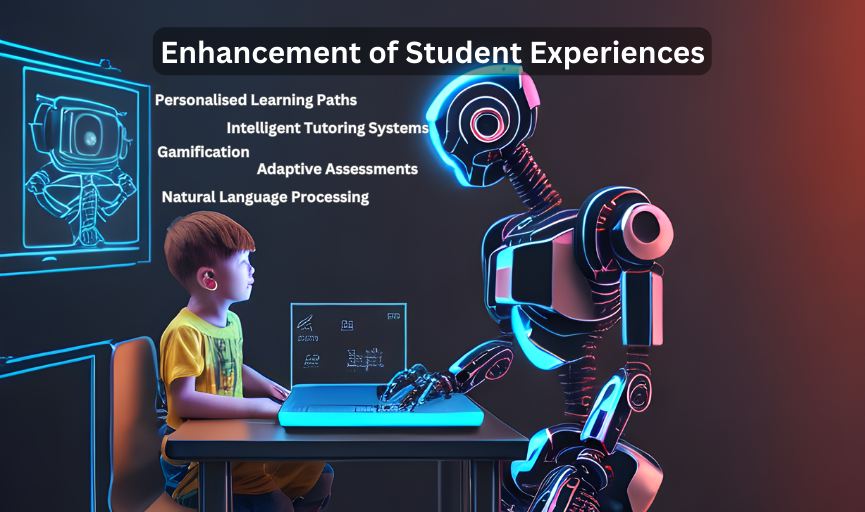The Future of AI in Education: Revolutionizing Learning with Machine Learning
In the age of digital transformation, education is undergoing a profound shift. The chalkboards of yesterday are giving way to smartboards, and traditional teaching methods are being complemented—or even replaced—by cutting-edge technologies. Among these, Artificial Intelligence (AI) stands out as a revolutionary force poised to reshape the future of education. With the power of Machine Learning (ML), AI is not just a tool; it’s a catalyst for personalized, inclusive, and effective learning.
The Current Challenges in Education
Before diving into AI’s potential, let’s take a moment to understand the hurdles our education systems face. In many parts of the world, large classroom sizes make it nearly impossible for teachers to provide individual attention. The traditional one-size-fits-all teaching approach often leaves some students struggling while others excel ahead of the curve. Add to this the challenge of teacher shortages and the growing need for continuous upskilling, and it’s clear that a transformative solution is essential.
How AI is Addressing These Challenges
AI, powered by machine learning, is stepping in to address these issues head-on. Here are some ways AI is revolutionizing the educational landscape:
Personalized Learning Paths: Every student learns differently. AI-driven platforms, like those used by Duolingo and Khan Academy, analyze student performance and adapt lessons to suit their learning speed and style. For instance, if a student struggles with a math concept, the system can provide additional resources, exercises, or even video tutorials tailored specifically to that topic.
Smart Content Creation: AI isn’t just about consuming knowledge; it’s also about creating it. Tools like AI-driven content generators help educators craft quizzes, assignments, and study materials in minutes. Moreover, augmented reality (AR) and virtual reality (VR) tools powered by AI are bringing history, science, and art lessons to life, making learning more immersive and engaging.
AI Tutors and Chatbots: Virtual tutors are bridging the gap between students and educators. Chatbots like IBM’s Watson Tutor are capable of answering questions, explaining concepts, and providing round-the-clock support to learners. These AI tutors not only reduce the workload on teachers but also ensure that students never feel stranded in their academic journey.
Automated Administrative Tasks: One of the less glamorous but equally impactful uses of AI is in automating administrative tasks. From grading exams to managing student records, AI tools are freeing up valuable time for educators to focus on teaching and mentorship.
Real-Life Applications of AI in Education
The future isn’t just a distant possibility; it’s already here. Schools and universities worldwide are adopting AI tools to enhance the learning experience:
Carnegie Learning uses AI to offer personalized math tutoring to students, improving outcomes significantly.
BYJU’S, an Indian ed-tech giant, employs machine learning algorithms to create adaptive learning paths for millions of students.
Coursera leverages AI to recommend courses based on user behavior and learning goals, creating a truly personalized experience.
Ethical Considerations and Challenges
While the potential of AI in education is immense, it’s not without challenges. Data privacy is a significant concern, as AI systems rely heavily on collecting and analyzing student information. Ensuring that this data is handled securely and ethically is paramount. Additionally, there’s the risk of over-reliance on technology, which could undermine the human touch that is so vital in education.
The Road Ahead: What’s Next?
Looking to the future, AI promises even more exciting developments in education. Imagine a world where:
AI can predict a student’s career path based on their strengths and interests.
Virtual reality classrooms allow students from around the globe to collaborate and learn together.
Machine learning algorithms identify and address learning disabilities at an early stage.
These advancements could lead to a truly inclusive and equitable education system where every student has the opportunity to thrive.
Conclusion
The integration of AI in education is not just a technological upgrade; it’s a paradigm shift. By addressing the limitations of traditional teaching methods and opening doors to innovative solutions, AI is paving the way for a brighter, smarter future. However, as we embrace this transformation, it’s crucial to balance technological advancements with ethical considerations to ensure that the human element of education remains intact.
Are we ready to let AI redefine the way we learn? The journey has already begun, and the possibilities are endless. Let’s step into this future together, where technology and humanity work hand in hand to unlock the true potential of education.






Good blog, gives insights about future AI
ReplyDelete